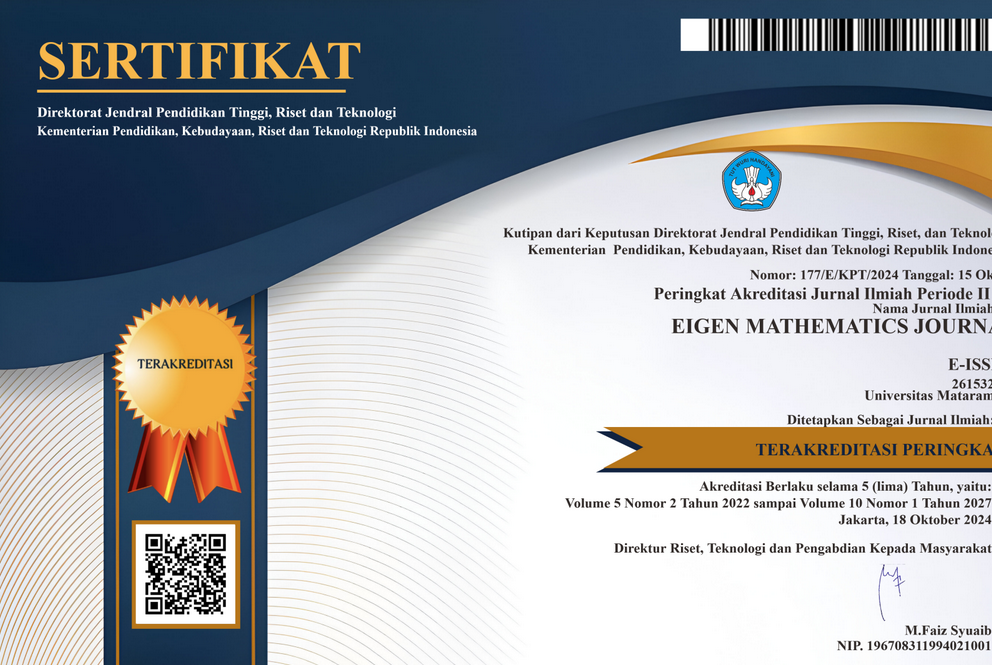Application of the Poverty Equivalent Growth Rate (PEGR) Method (Case Study: Household Income Group in South Sulawesi 2016-2018)
DOI:
https://doi.org/10.29303/emj.v5i1.125Keywords:
Poverty, Pro Poor, Poverty Equivalent Growth RateAbstract
The purpose of this study is to analyze pro-poor growth in South Sulawesi Province with an income dimension approach for the classification of urban and rural areas. This study reveals the poverty situation in South Sulawesi and the extent of the growth of the poor population. In addition, an overview of the effects of growth and distribution effects on changes in poverty is also obtained. Using SUSENAS data from South Sulawesi Province from 2016 to 2018, it was found that growth tends to have a greater impact on reducing poverty in rural areas than in urban areas based on the results of the Shapley decomposition. The results of calculating the degree of pro-poor growth with PEGR, show that income growth tends to be trickle-down from 2016 to 2017. The decline in the poverty rate did occur but the benefits of growth received by the poor were proportionally less than the non-poor. Income growth shows pro poor in the period from 2017 to 2018.References
Araar, Abdelkarim and Duclos, Jean-Yves. 2013. User Manual DASP version 2.3:Distributive Analysis Stata Package. Universite Laval PEP, CIRPEE and World Bank
[BPS] Badan Pusat Statistik. Website BPS, berbagai publikasi. www.bps.go.id
[BPS] Badan Pusat Statistik. 2016-2018. Berita Resmi Statistik. Sulawesi Selatan
[BPS] Badan Pusat Statistik. 2019. Data dan Informasi Kemiskinan Provinsi Sulawesi Selatan 2018. BPS. Sulawesi Selatan
Departemen Sosial RI. 2005. Pokok-pokok Pikiran Rencana Pembangunan Jangka Panjang (PJP) Tahun 2005-2009 dan Pembangunan Jangka Menengah (PJM) Tahun 2004-2009 Bidang Kesejahteraan Sosial. Jakarta.
Grimm, Michael, Klasen, Stephan, and Mckay, Andrew. 2007. DETERMINANTS OF PRO POOR GROWTH: Analytical Issues and Findings from Country Cases. Palgrave, Mcmillan.
Hajiji, Ajid. 2010. Analisis Pertumbuhan Ekonomi, Ketimpangan Pendapatan,dan Kemiskinan di Propinsi Riau. [Tesis]. IE-IPB. Bogor.
Kakwani, Nanak and H. H. Son. 2008. Poverty Equivalent Growth Rate. The review of Income and Wealth;Series 54, Number 4, Desember 2008.
Suhartini, Atik Mar’atis. 2011. Pro Poor Growth Tingkat Provinsi di Indonesia [Tesis]. Institut Pertanian Bogor. Jawa Barat
Suparno. 2010. Analisis Pertumbuhan Ekonomi dan Pengurangan Kemiskinan: Studi Pro Poor Growth Policy di Indonesia. [Tesis]. IE-IPB. Bogor
World Bank. 2019. Visualize Inequality.
http://www1.worldbank.org/poverty/visualizeinequality/ECA/bottom_40.html
Downloads
Published
How to Cite
Issue
Section
License

This work is licensed under a Creative Commons Attribution-NonCommercial-ShareAlike 4.0 International License.
All articles published in the Eigen Mathematics Journal will be available for free reading and downloading. The license applied to this journal is Creative Commons Attribution-Non-Commercial-Share Alike (CC BY-NC-SA).
Similar Articles
- Ineu Sulistiana, Elyas Kustiawan, Ririn Amelia, Survival Analysis with Cox Proportional Hazard Regression Modeling (Case Study: Student Study Period Data on Engineering Faculty of Bangka Belitung University) , EIGEN MATHEMATICS JOURNAL: Vol. 6 No. 2 (2023): December
You may also start an advanced similarity search for this article.






